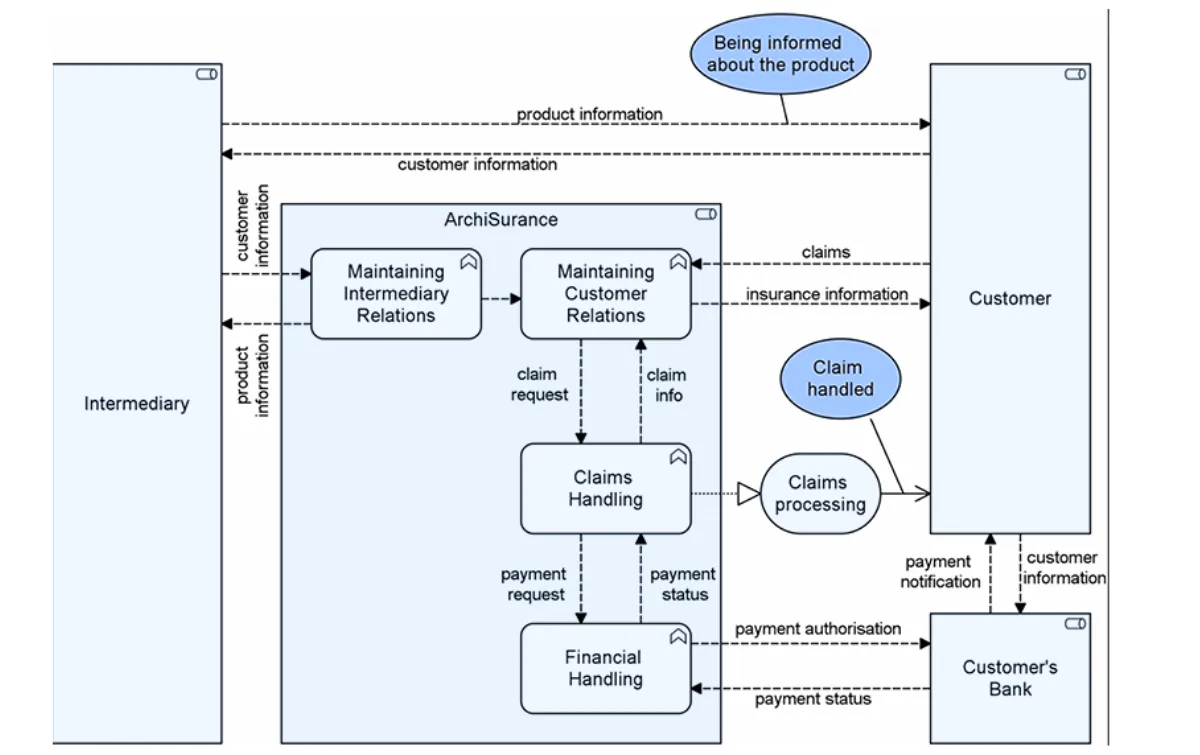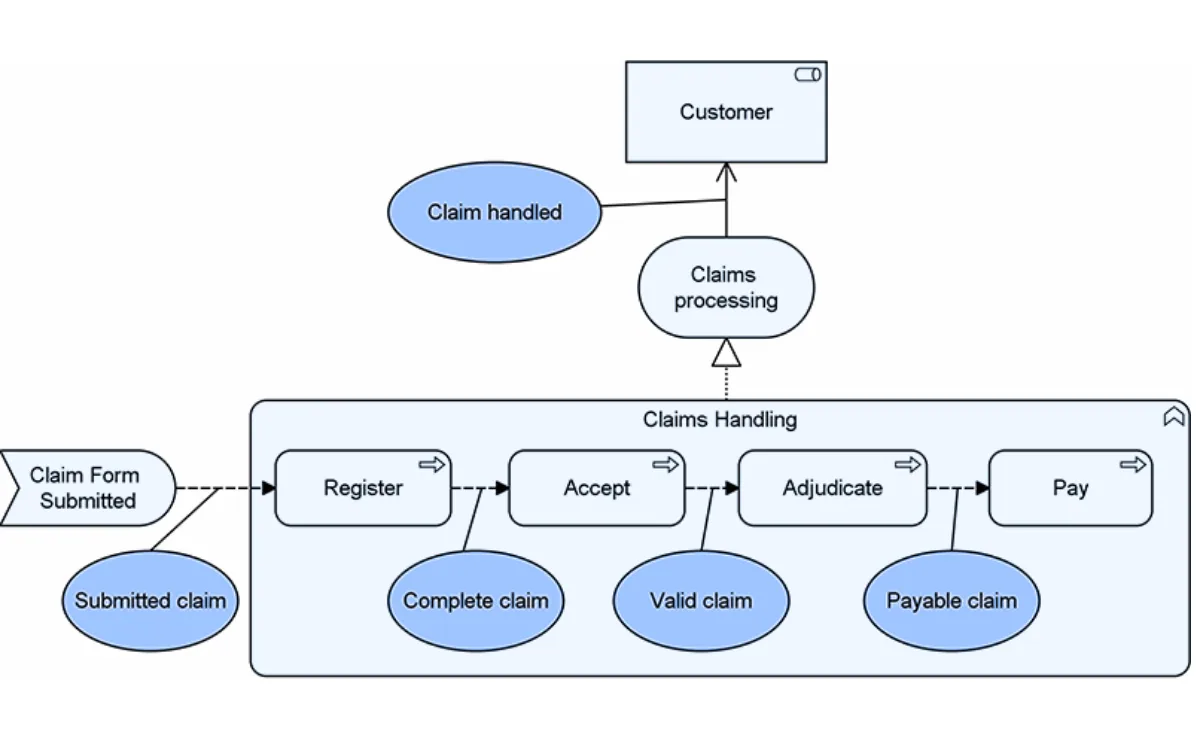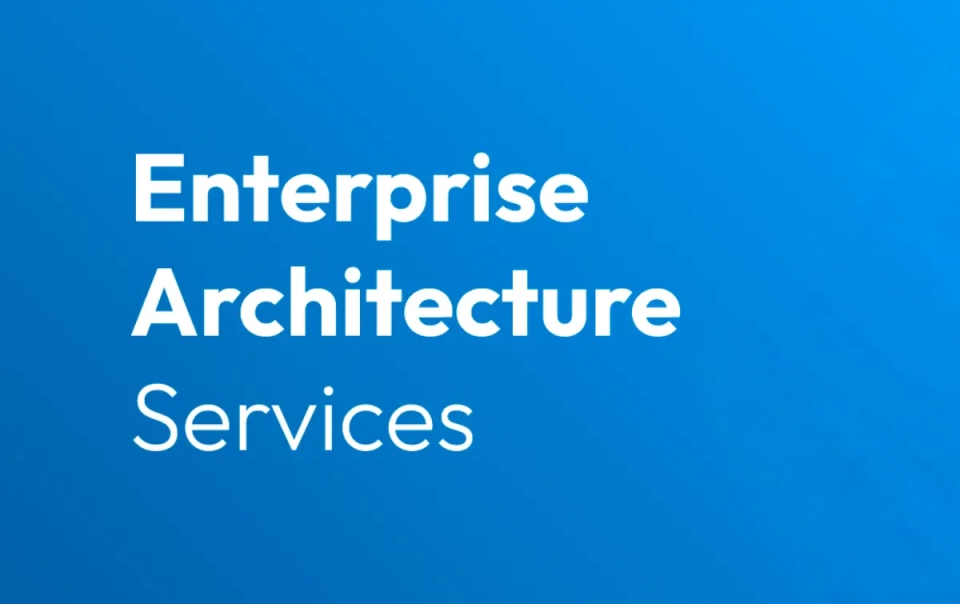The Business Architect's Toolbox: Value Stream Mapping

Value Stream Mapping (VSM) is one of the most powerful tools in a business architect’s arsenal. By visualizing how value flows across processes, teams, and systems, VSM helps organizations identify inefficiencies, align capabilities, and drive strategic improvements. In this article, we explore how value stream mapping fits into the broader business architecture landscape and why it’s essential for delivering enterprise-wide transformation.
What is Value Stream Mapping?
Business architecture is a comprehensive approach to understanding and designing an organization’s structure, processes, and capabilities. It encompasses several key domains as defined by the Guide to the Business Architecture Body of Knowledge (BIZBOK Guide®), which form the foundation of business architecture and are interconnected components that provide different perspectives on an organization’s operations and structure. The four core domains are Value Streams, Capabilities, Organization, and Information.
The business architecture techniques of mapping are closely related to these four core domains, providing visual representations and analyses of each domain as well as their interrelationships.
What is Value Stream Mapping?
Business architecture is a comprehensive approach to understanding and designing an organization’s structure, processes, and capabilities. It encompasses several key domains as defined by the Guide to the Business Architecture Body of Knowledge (BIZBOK Guide®), which form the foundation of business architecture and are interconnected components that provide different perspectives on an organization’s operations and structure. The four core domains are Value Streams, Capabilities, Organization, and Information.
The business architecture techniques of mapping are closely related to these four core domains, providing visual representations and analyses of each domain as well as their interrelationships.
Why Value Stream Mapping is useful in Business Architecture
Value mapping is a useful technique in business architecture. It provides insight into the value produced by the various activities of the organization, how this contributes to its overall value proposition, and how this value is exchanged with other parties in a value network. In this blog, we look at how you can describe value chains, value streams, and value networks.
The classical example of this is the Value Chain defined by Porter, which divides the activities of an enterprise in value-creating and supporting, and subdivides the former in the typical stages of a production process, with inbound logistics, operations, outbound logistics, marketing and sales, and service. More recent approaches such as e3value, the Value Delivery Metamodel (VDML) and the BIZBOK take a more general stance and also look at value exchange in the broader ecosystem. The table below provides a general mapping aimed at supporting most of these approaches.
VALUE MAP | ARCHIMATE |
|---|---|
| Value Proposition | Product + Value |
| Value Item | Value |
| Value Stream | Business Process (highest-level) |
| Value Stage, Activity | Business Process or Function |
| Value Exchange | Flow + associated Value |
| Actor, Organization Unit | Business Actor |
| Role | Business Role |
| Collaboration | Business Collaboration |
| Capability | Capability |
The mapping shown in this table mainly uses ArchiMate’s business layer concepts to express value maps. Remember that ArchiMate uses the same concept for all levels of granularity, i.e., a business process can express an entire value stream, a value stage in that stream, or activities within such a stage, down to the smallest individual task.
Furthermore, this mapping uses value elements associated with products and with flow relationships to model the value propositions and exchange of value along the value chain, stream or network.
This maps well onto typical Porter Value Chain models. Alternatively, for a somewhat more abstract view, we may map a value stage to a (named) grouping of capabilities in ArchiMate, and relate these groupings via flow relationships with associated value elements.
A partial Value Network containing several Actors, Value Exchanges and Value Items can be seen in the next figure (Figure 1).

The following figure (Figure 2) elaborates on the Claims Handling business function from the previous figure, and shows a Value Stream and Value Exchanges between its different stages.




